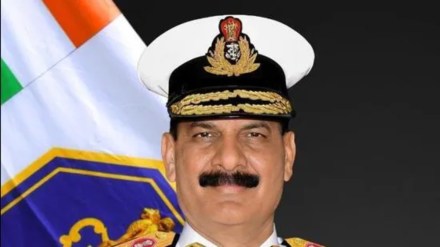India is carefully monitoring the rapid growth of Pakistan’s Navy, which is increasingly relying on Chinese assistance for its expansion. Admiral Dinesh K. Tripathi, the Indian Navy Chief, stated that India is adjusting its strategies to respond to the changing dynamics in the region, especially as Pakistan’s naval capabilities continue to develop with China’s support.
Pakistan’s Expanding Naval Fleet
At a press conference ahead of Navy Day, Admiral Tripathi noted the surprising pace at which Pakistan is building up its naval force. The Pakistani Navy is aiming to become a 50-ship fleet, which, given Pakistan’s economic challenges, has raised concerns about the prioritization of military buildup over the well-being of its citizens. “They have chosen weapons over the welfare of their people,” Admiral Tripathi said, referring to Pakistan’s focus on military spending rather than addressing its internal economic and social issues.
A significant part of this growth is attributed to China’s involvement in Pakistan’s naval projects. Many of Pakistan’s new warships and submarines are being built with Chinese technology and support. Admiral Tripathi specifically mentioned the eight new submarines being added to Pakistan’s fleet, which will enhance its combat capabilities. “We are fully aware of their capabilities,” he remarked, adding that India is watching these developments closely and is prepared for any shift in the regional military balance.
Adapting to Changing Regional Threats
In response to the expanding capabilities of Pakistan’s Navy, India’s naval strategy is evolving to address emerging threats. “We are tweaking our concepts to be able to tackle all threats from our neighbours,” said Admiral Tripathi. The Indian Navy is not only keeping track of Pakistan’s military buildup but is also staying alert to the broader activities of extra-regional powers, particularly China.
India’s naval forces are closely monitoring China’s growing presence in the Indian Ocean region. “We are keeping a watch on extra-regional forces, including the Chinese PLA Navy, their warships, and their research vessels,” Admiral Tripathi stated, reaffirming India’s commitment to ensuring that its maritime security is not compromised. As China continues to expand its naval reach, India is focused on maintaining a strong presence in the Indian Ocean, safeguarding its interests while ensuring regional stability.
Security in the Indian Ocean
While the Indian Navy acknowledges that the oceans are open to all nations, Admiral Tripathi made it clear that India will not tolerate any actions that undermine its security. “Anybody can operate in the oceans as long as they are not affecting our security,” he stated. India’s naval forces are well-equipped and capable of monitoring the activities of foreign forces in the region to ensure that national security remains intact.
Admiral Tripathi also pointed out India’s efforts to enhance its own deterrence capabilities. With a focus on nuclear-powered submarines, India is working to expand its fleet of nuclear-capable vessels. “Our nuclear submarines will be ready in the time we have indicated,” he said, referencing the INS Arighaat, India’s second nuclear-powered ballistic missile submarine. This submarine, along with India’s other strategic assets, forms an integral part of the country’s defence posture, allowing India to maintain a credible deterrence.
Indigenous Naval Capabilities
In addition to monitoring external threats, India is also prioritizing the development of its indigenous naval capabilities. “62 warships and one submarine are currently under construction,” Admiral Tripathi said, indicating the scale of India’s ongoing naval modernization efforts. The Navy is also planning to build additional warships and submarines, including six new submarines under Project 75 India. These efforts are part of India’s broader strategy to bolster its naval power and ensure that it can effectively address any regional or global challenges.
